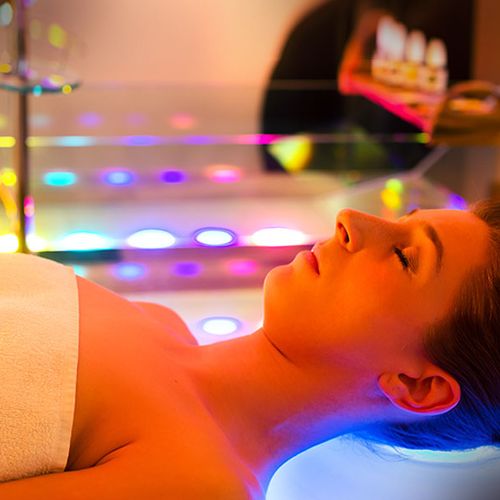Color therapy, or chromotherapy, is a holistic healing technique that utilizes the energy of colors to balance and enhance physical, mental, and emotional well-being. This ancient practice, deeply rooted in various cultural traditions, operates on the principle that colors carry specific frequencies that directly influence our mood and overall health. By understanding these effects, you can effectively incorporate color therapy into your daily life to boost your well-being. Let’s take a look at how to integrate this powerful technique into your routine and experience its many benefits.
The Impact of Colors on Our Emotions
Colors are more than just visual stimuli; they have a profound effect on our psychological state. Each color emits a specific wavelength that can evoke certain emotions and physical responses. For instance, warm colors like red and orange are often associated with energy and enthusiasm, while cool colors like blue and green are linked to calmness and relaxation. Understanding the emotional impact of colors is the first step in using color therapy to improve your mood and mental state.
Inside a Typical Color Therapy Session
When you attend a color therapy session, you can expect a serene environment tailored to enhance relaxation and focus. The session typically begins with a consultation where the therapist assesses your current emotional, mental, and physical state. This helps in determining which colors will be most beneficial for your specific needs.
Once the appropriate colors have been selected, the therapist may use various methods to expose you to these colors. One common approach involves the use of colored lights, where you might lie comfortably in a dimly lit room as gentle beams of colored light are directed towards specific areas of your body. These lights can vary in intensity and duration, depending on your individual needs and the goals of the therapy.
In addition to light exposure, other techniques might include the application of color-saturated oils during a massage, which allows the therapeutic properties of the colors to be absorbed through the skin. Some sessions might also incorporate guided visualization exercises, where you are encouraged to visualize certain colors to evoke specific emotional responses or to promote mental clarity. You might also be advised to wear certain colors or incorporate them into your diet as part of a broader, ongoing color therapy regimen.
Throughout the session, the atmosphere is carefully managed to maintain a sense of peace and comfort, often accompanied by soothing music or nature sounds. The overall goal is to leave you feeling balanced, revitalized, and more in tune with your emotional and physical well-being. Each session is highly personalized, ensuring that the experience aligns with your individual therapeutic needs.
Understanding the Mechanics of Color Therapy
A critical analysis of chromotherapy has revealed that the human body's response to colors may be tied to the quantum mechanical dipole moment of water molecules within our cells. The hypothesis suggests that as different colors are absorbed, they produce charge quantization phenomena, which in turn affect the body's energy balance. This concept moves beyond traditional Newtonian physics, which focuses on the physical and observable aspects of the body, and instead embraces Einstein's ideas that energy and matter are dual expressions of the same substance.
In this framework, each color corresponds to a specific wavelength, frequency, and amount of energy, which interacts with the body's electromagnetic field. The theory posits that the body, composed of various frequencies and vibrational energies, can be influenced by the correct application of colors to restore balance. For example, research has shown that warm colors like red and yellow can stimulate energy and increase physical activity, while cool colors like blue and green can have calming effects, reducing stress and promoting relaxation. This understanding aligns with the ancient belief that different colors can directly impact the body's physiological and psychological states, offering a scientific basis for the healing properties observed in chromotherapy. Learn more about it here.
Incorporating Color into Your Environment
One of the most accessible ways to benefit from color therapy is by introducing specific colors into your living and working spaces. Whether it's through wall paint, furniture, artwork, or even the clothes you wear, surrounding yourself with colors that promote positivity can have a significant effect on your mood. For example, adding shades of yellow to your home office might boost creativity and focus, while incorporating soft blues in your bedroom could enhance relaxation and improve sleep quality.
Using Color in Mindfulness and Meditation Practices
Color therapy can also be integrated into your mindfulness and meditation routines. Visualizing specific colors during meditation can help you achieve desired emotional states. For instance, if you're seeking inner peace and tranquility, you might focus on the color green, which is associated with harmony and balance. This technique can amplify the benefits of your mindfulness practice, helping you to cultivate a deeper sense of calm and well-being.
Personalizing Your Color Therapy Experience
Finally, it's essential to remember that color therapy is highly personal. The way you respond to different colors may vary based on your individual experiences, preferences, and cultural background. Take the time to experiment with different colors in various aspects of your life and observe how they affect your mood and energy levels. By personalizing your approach to color therapy, you can create a unique and effective tool for enhancing your well-being.
Color therapy offers a simple yet powerful way to influence your emotional and physical well-being. By understanding the impact of colors and thoughtfully incorporating them into your daily life, you can harness their energy to promote balance, relaxation, and vitality. Whether through your environment, meditation, or personal care routines, color therapy can be a valuable addition to your holistic wellness toolkit.
Sources:
A Critical Analysis of Chromotherapy and Its Scientific Evolution
https://www.ncbi.nlm.nih.gov/pmc/articles/PMC1297510/
The mechanistic basis of chromotherapy
https://www.sciencedirect.com/science/article/abs/pii/S096522991930915X





















